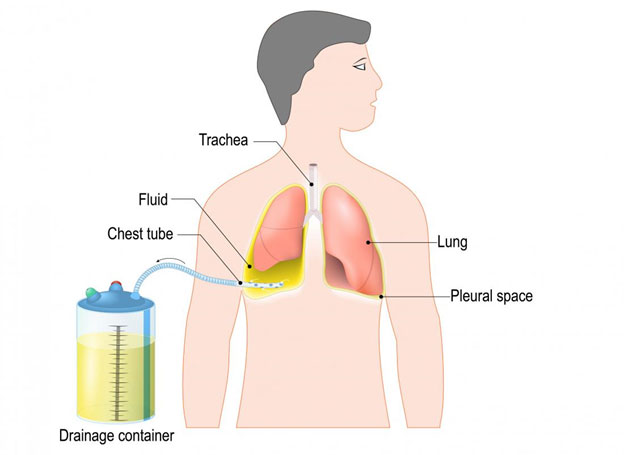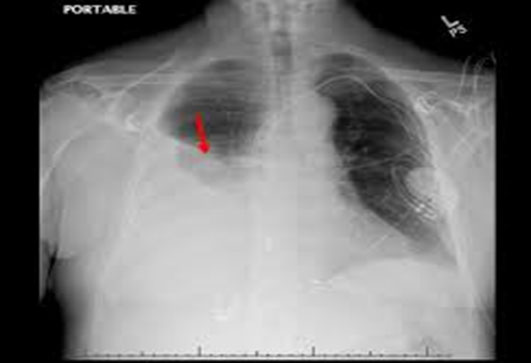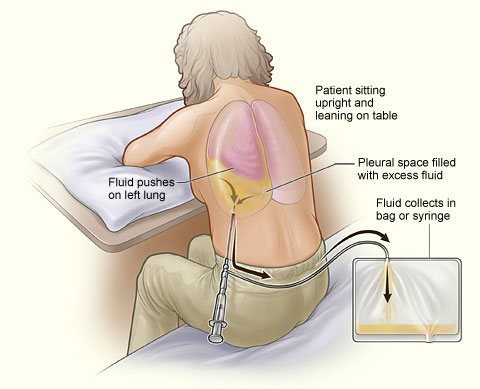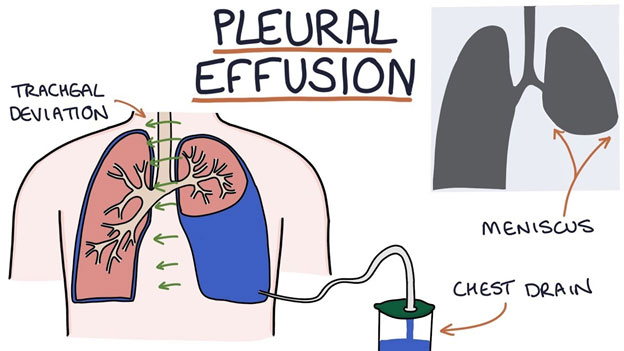Introduction:
Pleural effusion is a medical condition characterized by the abnormal accumulation of fluid in the pleural cavity, the space between the membranes that surround the lungs. This condition can cause discomfort, breathing difficulties, and potentially life-threatening complications. To manage pleural effusion effectively, medical professionals often employ a procedure called chest tube insertion. In this blog, we will explore the causes, symptoms, and treatment options for pleural effusion, with a specific focus on the role of chest tubes.

Understanding Pleural Effusion:
The pleural cavity normally contains a small amount of fluid that helps lubricate the surfaces between the lungs and the chest wall, allowing smooth movement during breathing. However, when an imbalance occurs between the production and absorption of this fluid, pleural effusion can develop. There are several causes for pleural effusion, including:
- Infections: Pneumonia, tuberculosis, and other infectious diseases can lead to the accumulation of fluid in the pleural space.
- Heart failure: Congestive heart failure can cause fluid to accumulate in the lungs, which may subsequently lead to pleural effusion.
- Malignancies: Certain cancers, such as lung cancer, breast cancer, and lymphoma, can result in pleural effusion due to the involvement of the pleura.
- Liver or kidney disease: Conditions that affect the liver or kidneys can disrupt fluid balance and contribute to the development of pleural effusion.
- Pulmonary embolism: Blood clots in the lungs can impede fluid drainage, leading to pleural effusion.
- Trauma: Chest injuries or surgeries can cause pleural effusion due to damage to the pleural membranes.

Symptoms of Pleural Effusion:
The symptoms of pleural effusion can vary depending on the amount of fluid present and the underlying cause. Common signs and symptoms include:
- Shortness of breath or difficulty breathing
- Chest pain, which may worsen during deep breathing or coughing
- Dry or productive cough
- Fatigue and weakness
- Decreased appetite and unintentional weight loss
- Fever, if an infection is present

Treatment Options:
When treating pleural effusion, the underlying cause must be addressed. Treatment options may include:
- Thoracentesis: This procedure involves inserting a needle into the pleural space to drain the accumulated fluid. Thoracentesis is commonly used for small or uncomplicated pleural effusions.
- Chest tube insertion: For larger or persistent effusions, the insertion of a chest tube is often necessary. A chest tube is a flexible plastic tube that is placed between the ribs into the pleural space to drain the fluid. It is usually connected to a drainage system, allowing for continuous or intermittent drainage until the fluid is resolved.
- Medications: Depending on the underlying cause, medications such as antibiotics, diuretics, or anti-inflammatory drugs may be prescribed to manage pleural effusion.
- Pleurodesis: In some cases, a procedure called pleurodesis may be performed. It involves the injection of medications or the introduction of substances into the pleural space to create inflammation, causing the pleural membranes to stick together. This prevents fluid from accumulating again.
- Surgery: In certain situations, surgical intervention may be necessary to remove the pleural effusion or repair underlying issues.

The Role of Chest Tubes:
Chest tubes play a crucial role in the management of pleural effusion, especially when the effusion is large or recurrent. They help in draining the fluid, relieving pressure on the lungs, and improving breathing. The procedure for chest tube insertion typically involves the following steps:
1.Anesthesia: Local anesthesia is administered to numb the insertion site and reduce discomfort.
- Incision: A small incision is made between the ribs, and the chest tube is inserted into the pleural space.
- Placement and securement: The chest tube is positioned appropriately and secured in place using sutures or adhesive.
- Connection to a drainage system: The other end of the chest tube is connected to a drainage system, which allows the fluid to drain out of the pleural space.
- Monitoring and care: The patient is closely monitored to ensure proper drainage and to watch for any complications. The drainage system is regularly checked for blockages and emptied as necessary.
- Removal: Once the pleural effusion has resolved or significantly reduced, the chest tube can be safely removed.
Conclusion:
Pleural effusion can cause significant discomfort and breathing difficulties. Chest tube insertion is a valuable procedure used to manage large or recurrent effusions, allowing for the drainage of fluid and relieving pressure on the lungs. It is important to address the underlying cause of pleural effusion to ensure effective treatment and prevent complications. If you experience symptoms of pleural effusion, it is crucial to seek medical attention promptly for proper diagnosis and appropriate management.

